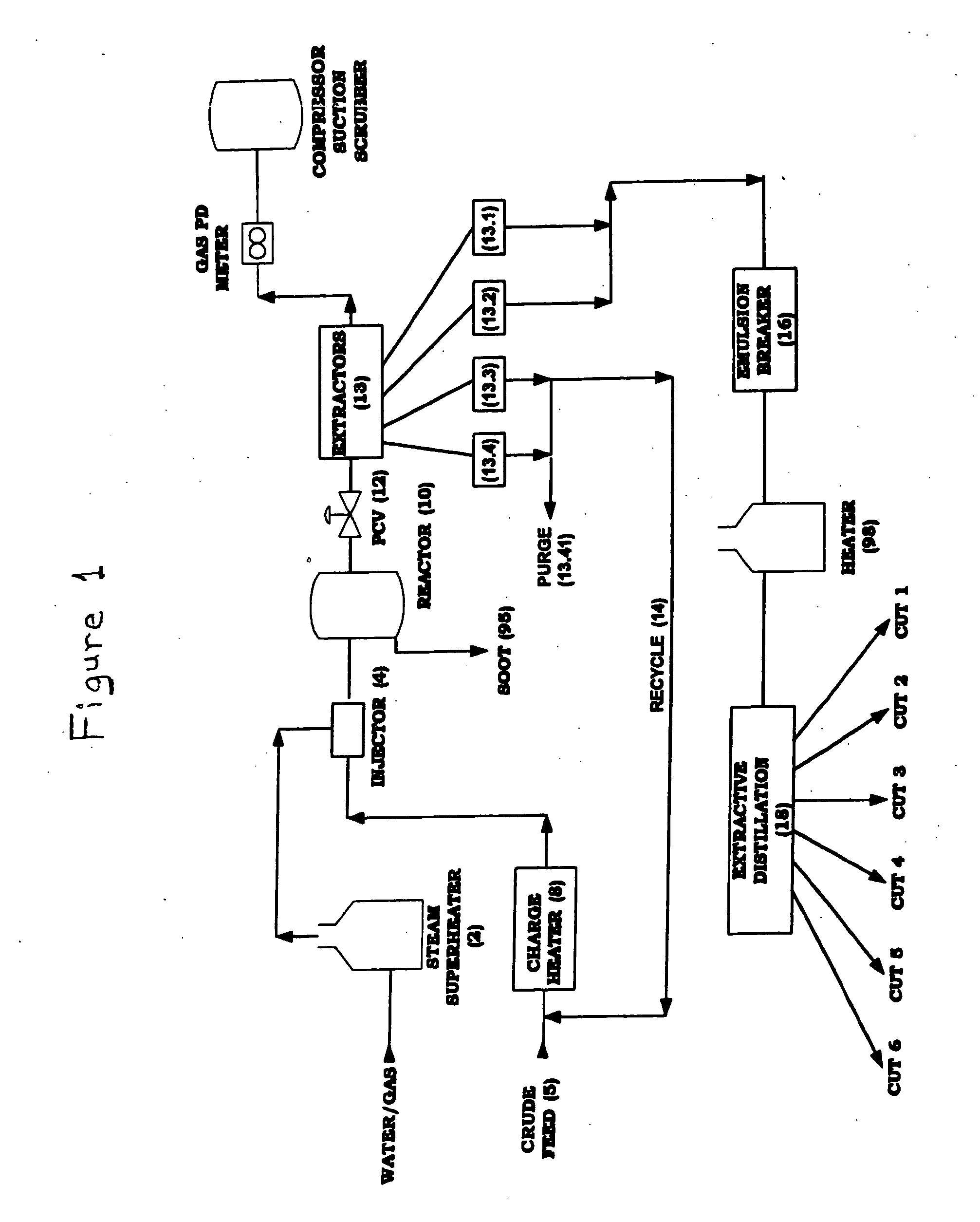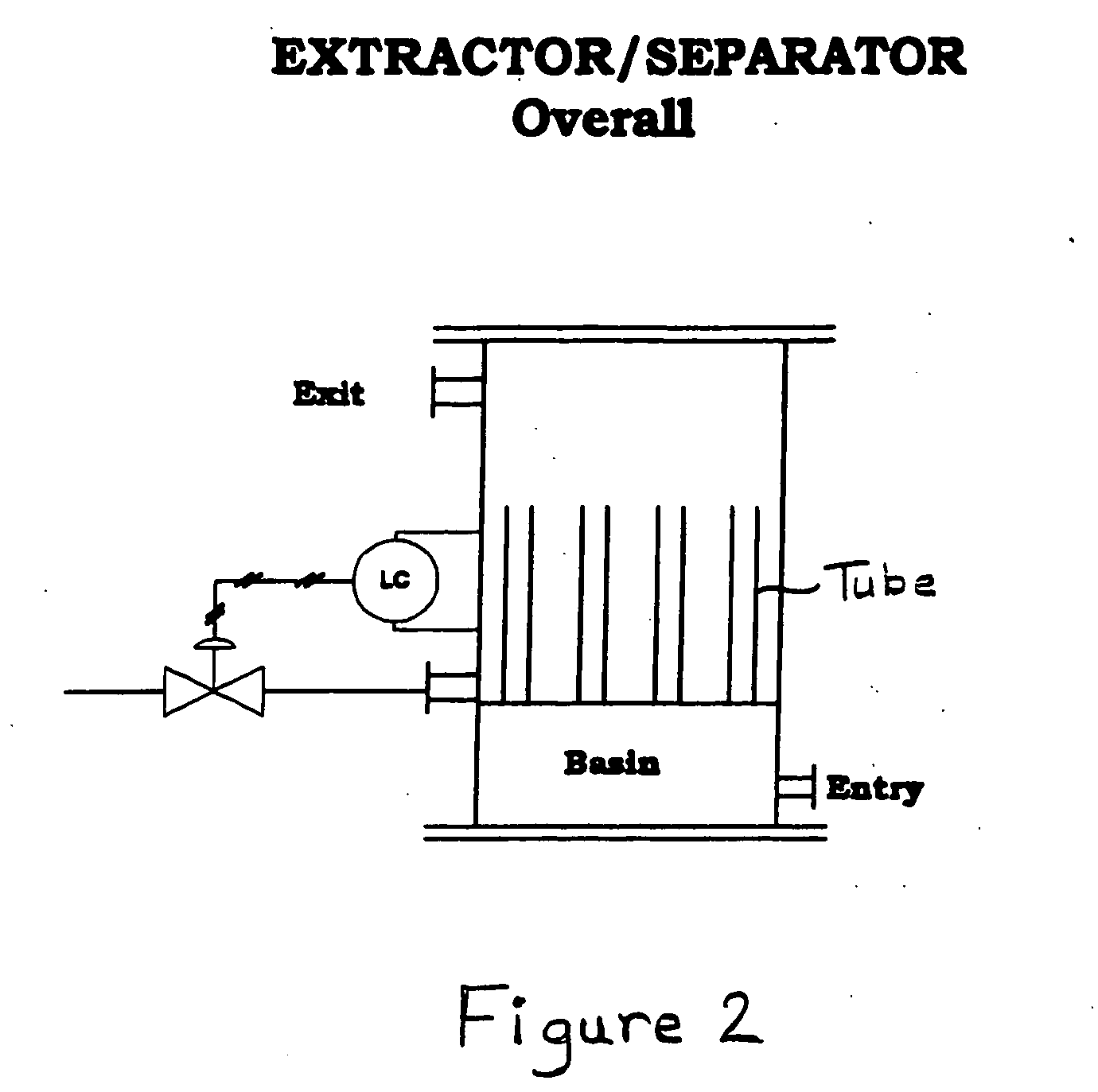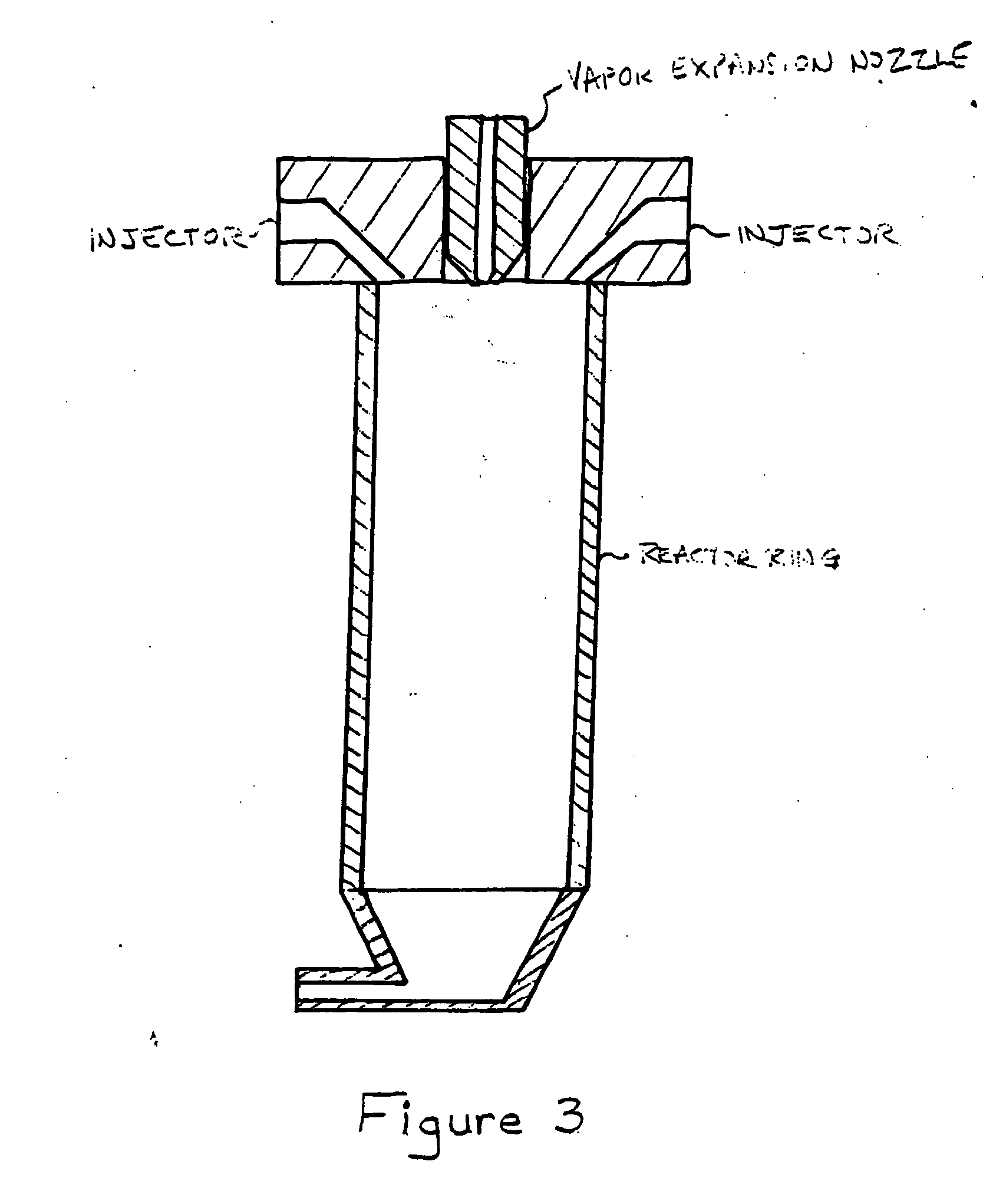Deep conversion combining the demetallization and the conversion of crudes, residues or heavy oils into light liquids with pure or impure oxygenated compounds
a technology of deep conversion and heavy oil, which is applied in the direction of hydrocarbon oil cracking process, thermal non-catalytic cracking, chemistry apparatus and processes, etc., can solve the problems of difficult transportation, difficult to completely avoid the deposits of these components on everything that comes into contact with these crudes, and few users and few outlets
- Summary
- Abstract
- Description
- Claims
- Application Information
AI Technical Summary
Benefits of technology
Problems solved by technology
Method used
Image
Examples
Embodiment Construction
[0032] Various embodiments may be characterized by the different features that are described below, which may be considered separately or together, this list being given for information purposes, without being all-inclusive.
[0033] (1) The feeds are taken as they appear. In the refinery, our process, to which we will refer as CPJ, can accept indiscriminately crude oil, atmospheric residue (Rat), residue under vacuum (RsV) or heavy distillates.
[0034] (2) The process never uses any vacuum processes that require large distillation columns which must also withstand the crushing strength of the atmospheric pressure.
[0035] (3) The feed introduced is treated with gases or vapors that act as energy vectors. [0036] If the process is carried out in a refinery, the vapor is preferably steam. [0037] if the process is carried out in an arid or desert area, the gases are preferably N2+CO2 (i.e. taken directly from the fumes exiting the furnaces). [0038] Any combination is possible and has been ...
PUM
 Login to View More
Login to View More Abstract
Description
Claims
Application Information
 Login to View More
Login to View More - R&D
- Intellectual Property
- Life Sciences
- Materials
- Tech Scout
- Unparalleled Data Quality
- Higher Quality Content
- 60% Fewer Hallucinations
Browse by: Latest US Patents, China's latest patents, Technical Efficacy Thesaurus, Application Domain, Technology Topic, Popular Technical Reports.
© 2025 PatSnap. All rights reserved.Legal|Privacy policy|Modern Slavery Act Transparency Statement|Sitemap|About US| Contact US: help@patsnap.com



